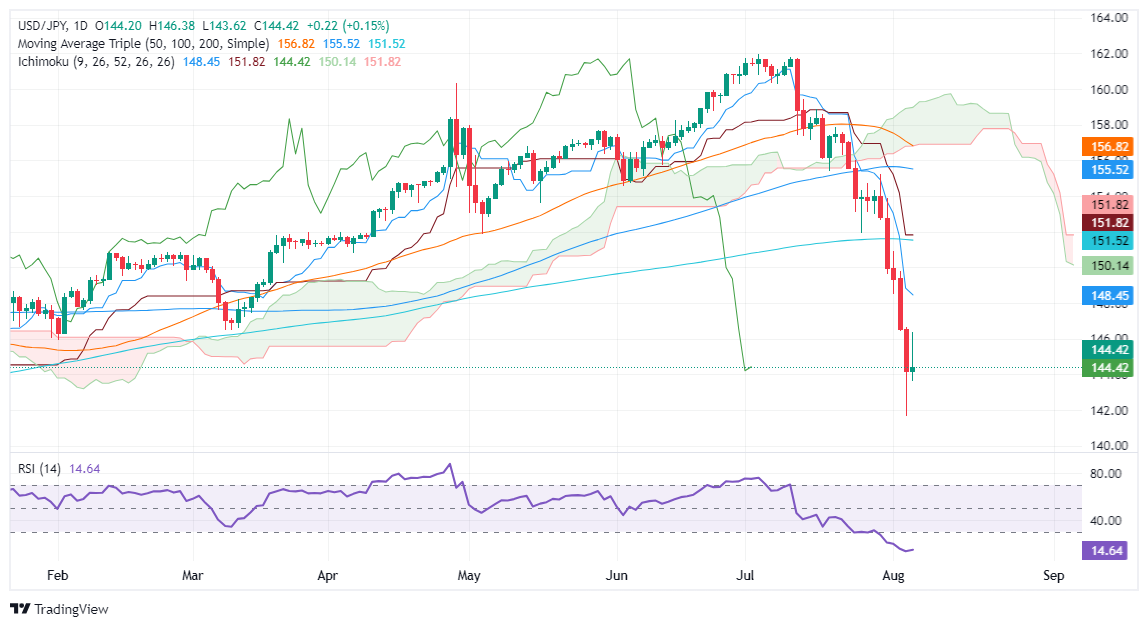USD/JPY Price Forecast: Retreats below 145.00 after short-lived bounce
- USD/JPY registers minimal gains, after briefly hitting 146.37.
- Sellers push the pair below 145.00, suggesting potential consolidation between 144.00-146.00.
- Key support levels: 144.00, August 6 low at 143.61, and August 2 bottom at 141.70.
- Resistance levels to watch: 145.00, August 5 peak at 146.37, and August 2 high at 149.77.
The USD/JPY registered minimal gains on Tuesday after hitting a daily high of 146.37. Yet buyers' failure to keep prices above the 146.00 figure sponsored a retracement toward the 144.00 region. The pair trades at 144.61, gaining 0.17% as Wednesday’s Asian session commences.
USD/JPY Price Forecast: Technical outlook
The USD/JPY rebound above 146.00 was short-lived. Sellers stepped in and pushed the exchange rate below 145.00, paving the way for subsequent losses. Although the Relative Strength Index (RSI) remains in oversold territory, price action suggests that the pair might consolidate at around 144.00-146.00 before printing the next leg-down.
If bears drag the exchange rate below 144.00, the next support would be the August 6 low of 143.61, followed by the August 2 bottom at 141.70.
Conversely, if USD/JPY edges above 145.00, the next resistance will be the August 5 peak at 146.37, followed by the 147.00 figure. on further strength, the next resistance is seen at August 2, high at 149.77.
USD/JPY Price Action – Daily Chart

Japanese Yen FAQs
The Japanese Yen (JPY) is one of the world’s most traded currencies. Its value is broadly determined by the performance of the Japanese economy, but more specifically by the Bank of Japan’s policy, the differential between Japanese and US bond yields, or risk sentiment among traders, among other factors.
One of the Bank of Japan’s mandates is currency control, so its moves are key for the Yen. The BoJ has directly intervened in currency markets sometimes, generally to lower the value of the Yen, although it refrains from doing it often due to political concerns of its main trading partners. The current BoJ ultra-loose monetary policy, based on massive stimulus to the economy, has caused the Yen to depreciate against its main currency peers. This process has exacerbated more recently due to an increasing policy divergence between the Bank of Japan and other main central banks, which have opted to increase interest rates sharply to fight decades-high levels of inflation.
The BoJ’s stance of sticking to ultra-loose monetary policy has led to a widening policy divergence with other central banks, particularly with the US Federal Reserve. This supports a widening of the differential between the 10-year US and Japanese bonds, which favors the US Dollar against the Japanese Yen.
The Japanese Yen is often seen as a safe-haven investment. This means that in times of market stress, investors are more likely to put their money in the Japanese currency due to its supposed reliability and stability. Turbulent times are likely to strengthen the Yen’s value against other currencies seen as more risky to invest in.